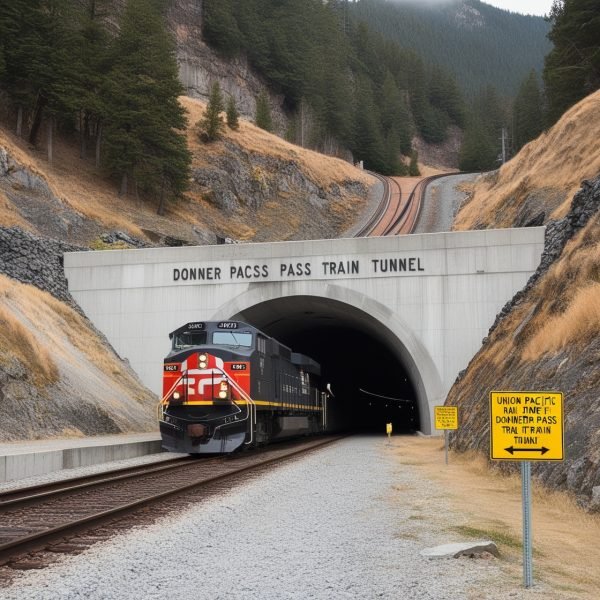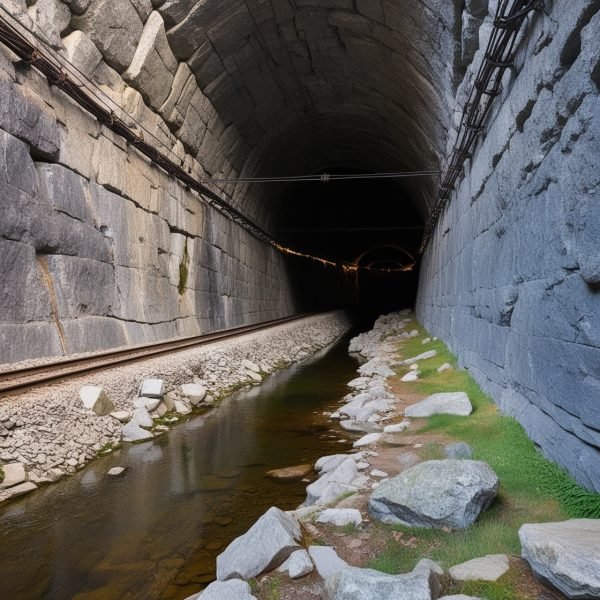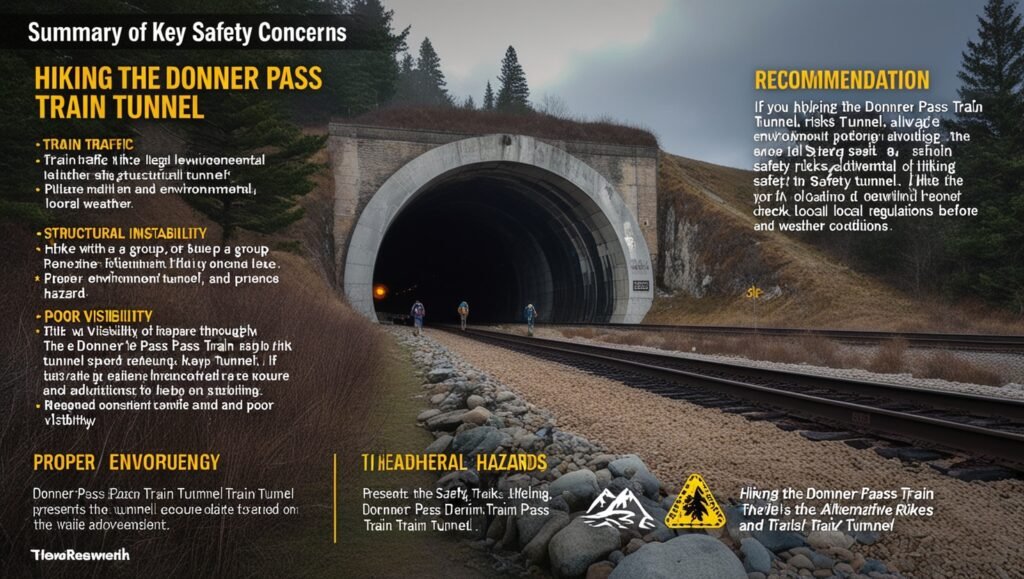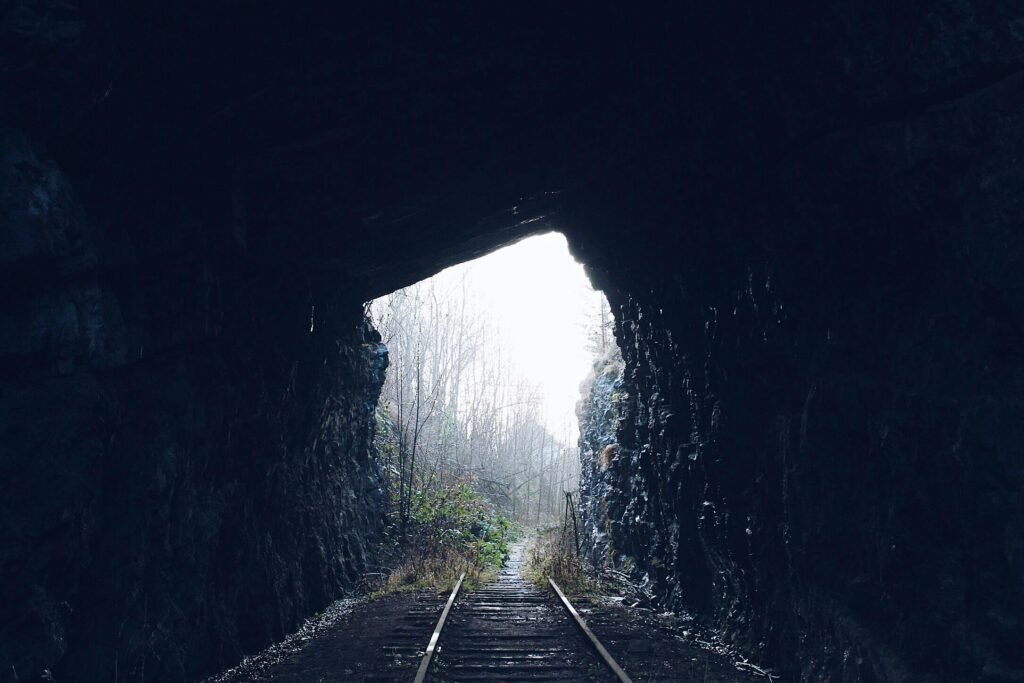Is Hiking the Donner Pass Train Tunnel Safe: Discover Everything
Trekking the Donner Pass Train Tunnel presents a fascinating mix of adventure, history, and unspoiled landscape. Renowned as a location along California’s Transcontinental Railroad, the tunnels have drawn the interest of thrill-seekers, history aficionados, and outdoor enthusiasts all around. However, it’s important to assess the safety of negotiating this difficult and maybe dangerous terrain before embarking on this unusual hiking trip. To assist you in making a wise decision, this essay will look at the hazards and safety measures related with climbing the Donner Pass Train Tunnel.
Table of Contents
ToggleLegal and Regulatory Concerns
Access Restrictions

Union Pacific Railroad owns the Donner Pass Train Tunnel, hence access to the tunnels is extremely controlled. Hiking in these places can be dangerous if you are not familiar with the policies controlling the place. Although they are not now actively used for train traffic, the tunnels themselves remain part of a vital infrastructure network and visiting these places can cause legal problems.
Make sure you know the local and federal rules before you go out. Researching the particular instructions for tunnel trekking helps one to avoid fines or other penalties. Also keep an eye for posted signs pointing to hazardous situations or limiting entry. Respect the legal limits of the region always to preserve safety and prevent needless conflicts.
Rules and Regulations

Although there is no clear legislation expressly prohibiting tunnel hiking, it’s important to keep current with local rules. Trespassing can be seen as a violation since the tunnel is on private land controlled by the railroad, hence fines or other legal actions might follow. Moreover, some of the trail could be labeled as dangerous depending on structural hazards or the existence of running trains.
Physical Safety Hazards
Train Traffic and Tunnel Use

Though the active train track does not include the tunnels, there are still major hazards of running across goods trains in this location. Though rare in this area, trains that do pass go at great speeds. If hikers are within the tunnel while a train passes by, this presents a significant risk.
One should examine train timetables or the probability of active train activity in the vicinity before leaving. When trains are expected to pass through, stay away from the tunnel since it offers no safe place for cover. The noise from the trains can be deafening, and the force of the train runs the danger of shaking trash free and maybe causing harm.
Structural Integrity of the Tunnel

Originally dug as part of the Transcontinental Railroad from solid granite, the old and abandoned Donner Pass Train Tunnel is The tunnel has deteriorated over time; its walls are collapsing, its wires are exposed, and its ledges are unstable. Falling debris or the possibility of becoming caught in small areas of the tunnel make some portions dangerous. The risks in the tunnel are increased by loose rocks and improvised water runoffs inside.
Prepare yourself knowing the state of the tunnel. One should never underplay the structural integrity of the tunnel. Always move carefully within, particularly close to any seeming unstable places.
Visibility and Lighting

The Donner Pass Train Tunnel has several pitch black passages. Although some places feature windows allowing natural light, most are totally dark, which makes navigating challenging. You should never rely on the flashlight of a phone for safety concerns since it will rapidly drain your battery and not enough light for safe travel.
One absolutely needs a good flashlight or headlamp. To prevent finding yourself in the dark, be sure you pack additional batteries. In case one fails, also pack a backup light source—a headlamp or another spare flashlight.
Environmental Factors
Weather Conditions

Home of Donner Pass, the Sierra Nevada area is well-known for its erratic climate. Snow and ice can cause the ground around the tunnel to be slick in the colder months, therefore raising the likelihood of falls or mishaps. Snowmelt can create muddy, sloppiness even in April. Winter months carry more danger; snow and avalanches are major issues.
Summer and fall are the ideal seasons to trek the Donner Pass Train Tunnel since the snow has melted and less standing water results, therefore lowering the general risk level. Before leaving, be sure to review weather forecasts since things could change quickly.
Wildlife Hazards

Bears, mountain lions, snakes, and smaller animals like rats and squirrels call the region around Donner Pass home. Although the local fauna usually avoids human activities, hikers should be alert especially in the tunnel where the presence of rats and other animals is somewhat frequent.
Always be cautious of your surrounds; carry bear spray. Make sure your dogs, or other animals you are hiking with, are on a leash. Pets might get lost in the tunnels, and the stony ground could provide extra dangers.
Terrain Challenges

Hiking around the Donner Pass Train Tunnel means negotiating uneven, rocky ground. The ground can be dangerous even though the track is only five miles long with a 250-foot elevation climb. Along with ancient tunnel trash, the steep, unstable ground creates tripping hazards, hence strong shoes are quite important.
The elevation is also more than 7,000 feet, which might cause altitude-related problems including dyspnea, particularly in non-accustomed to higher elevations people. Make sure you are physically ready for the climb; stop if necessary.
Preparation and Gear
Essential Gear for the Hike

Pack the correct equipment if you want to safely climb the Donner Pass Train Tunnel:
- Sturdy footwear: Navigating uneven and rocky ground calls for waterproof hiking boots with strong ankle support.
- Flashlight or headlamp: The gloomy portions of the tunnel depend critically on a strong, consistent light source.
- Extra batteries: For your flashlight and any other necessary gadget, pack extra batteries.
- First-aid kit: Be ready for little injuries like sprains or scrapes.
- Appropriate clothing: Wear waterproof clothes to stay dry and in layers to regulate shifting body temperature.
Physical Fitness

Though the climb is not very challenging, it is advisable to evaluate your physical condition before starting the Donner Pass trek. Because the terrain might be difficult, this climb is inappropriate for novices or those with mobility problems. The trail’s great elevation adds to its challenge, hence it is ideal for hikers with some background.
Safety Tips for Hikers
Hiking in Groups

Hiking in a group is always safer, as with any maybe dangerous adventure. A buddy system guarantees that, should an emergency strike, support is ready.
Emergency Procedures

Your hike should start early in the day. This guarantees you to finish the climb and leave the tunnel before evening. Usually taking two to three hours depending on pace and investigation, the trail is five kilometers.
Historical and Cultural Context
The History of Donner Pass and the Tunnel

Part of the Transcontinental Railroad, which helped to link the eastern and western United States, the Donner Pass tunnels have historical importance. Chinese immigrants built the tunnels under difficult conditions to cut through granite and create one of the most important transportation paths in the United States. These tunnels today are evidence to their tenacity as well as the history of the area.
Local Perspectives

Local rangers and hikers could have insightful analysis on the state of the tunnels and their safety. Before starting the climb, consulting seasoned hikers or professionals can provide useful direction and assistance.
Safer Alternatives

If you’re looking for safer substitutes near Donner Pass, various picturesque paths and viewpoints provide stunning views free from the dangers related with the railroad tunnels. For a safer, more leisurely experience, think about looking around the Donner Summit region or adjacent hiking trails.
Hiker Reviews and Experiences

Reading reviews from other hikers who have visited the Donner Pass Train Tunnel can offer still another perspective. First-hand accounts from several outdoor forums and blogs enable one to estimate the real state of the path and tunnels.
Conclusion

Summary of Key Safety Concerns
Hiking the Donner Pass Train Tunnel exposes a number of safety concerns including train traffic, structural instability, limited vision, environmental threats including wildlife and weather.
Recommendation
Those inclined to hike the Donner Pass Train Tunnel must be well-prepared. Should you choose to hike, be sure you understand the physical, legal, and environmental hazards involved. Go on a group hike; pack appropriately, and always review local rules and weather before leaving.
Final Thought
Although traversing the Donner Pass Train Tunnel offers an exciting journey, there are certain difficulties involved. Put your safety first; respect the history and natural beauty of the place; and, should the hazards appear excessive, think about other paths.
Call to Action

Share your experiences in the comments area whether you have questions or have trekked the Donner Pass Train Tunnel. Before starting any climb, always be sure to review revised rules and weather forecasts. if you need more info about hiking tips, so please visit our other hiking articles.

